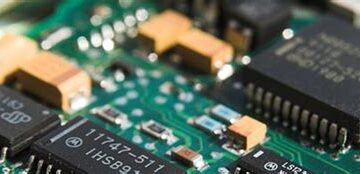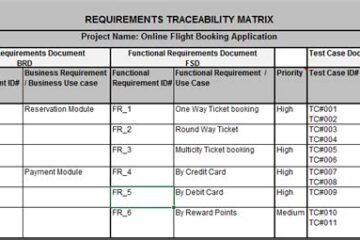What is an SMD counter and why use one?
An SMD (Surface Mount Device) counter, also known as an SMD counting machine, is a specialized piece of equipment used to accurately count large quantities of small electronic components like resistors, capacitors, inductors, diodes, transistors, and integrated circuits. These components are widely used in the manufacture of printed circuit boards (PCBs) and electronic assemblies.
There are several key reasons why using an SMD counter is beneficial:
-
Accuracy: Manually counting hundreds or thousands of tiny components is tedious and prone to errors. An SMD counter provides a fast and precise count, ensuring inventory accuracy.
-
Efficiency: Counting SMD components by hand is extremely time-consuming. An automated counting machine can count thousands of parts in minutes, greatly improving productivity.
-
Inventory Management: With an accurate count of on-hand components, it’s much easier to manage inventory levels, track usage, and avoid shortages or excess stock.
-
Cost Savings: By maintaining accurate inventory and avoiding over-purchasing or production delays due to shortages, an SMD counter can help reduce costs.
How does an SMD counting machine work?
Most SMD counters use a combination of vibration, infrared sensors, and advanced algorithms to rapidly and accurately count small parts. Here’s a basic overview of how they function:
-
Components are poured onto the machine’s tray or into a specialized counting container.
-
The machine vibrates the tray, causing the components to spread out into a single layer.
-
An infrared sensor scans the tray, detecting each individual component.
-
The machine’s software analyzes the sensor data, counting the total number of parts.
-
The count is displayed on the machine’s screen and can usually be exported for record-keeping.
Some advanced SMD counters may use additional technologies like computer vision or weight-based counting for even greater accuracy and versatility.
Types of SMD counting machines
There are several different types of SMD counters available, each with its own advantages and best-suited applications. Here are some of the most common types:
| Type | Description | Advantages |
|---|---|---|
| Portable/Handheld | Compact, battery-powered units ideal for on-the-go use or small-scale counting needs. | Affordable, easy to use, and portable. |
| Benchtop | Larger, more feature-rich machines designed for use in a fixed location like a warehouse or production facility. | Higher counting speeds, advanced features, and better suited for high-volume needs. |
| Inline | Fully automated systems that can be integrated into production lines or conveyor systems. | Hands-free operation, very high speeds, and seamless integration with other equipment. |
Some SMD counters are also designed for specific component types or packaging styles, such as tape and reel counters for components supplied on reels.

Setting up and using an SMD counter
While the exact setup and operation process may vary depending on the specific model, here’s a general guide for using an SMD counting machine:
-
Prepare the components: If necessary, remove any packaging materials and ensure the components are clean and free of debris.
-
Power on the machine: Connect the power cord (for benchtop models) or ensure the battery is charged (for portable units).
-
Select the counting mode: Most machines offer several counting modes, such as free count, batch count, or tolerance check. Choose the appropriate mode for your needs.
-
Choose the component type: If your counter has pre-programmed settings for different component types, select the one that matches your parts.
-
Calibrate if needed: Some machines may require calibration before each use to ensure accuracy. Follow the manufacturer’s instructions for the calibration process.
-
Load the components: Pour the components onto the tray or into the counting container, making sure they are evenly distributed and not overlapping.
-
Start the count: Press the start button or use the foot pedal (if available) to begin the counting process.
-
Record the results: Once the count is complete, record the total number of components and any other relevant data, such as the date, lot number, or operator name.
-
Empty and clean the tray: Remove the counted components and use a brush or compressed air to clean any dust or debris from the tray before the next count.
Best practices for accurate and efficient counting
To ensure the best results when using an SMD counter, follow these tips:
-
Keep components clean: Dust, dirt, or oil on the components can affect the sensor’s ability to detect them accurately. Ensure parts are clean before counting.
-
Avoid overloading: Do not pile components too high on the tray, as this can lead to miscounts. Spread them out evenly in a single layer.
-
Use the right tray: Some machines come with interchangeable trays for different component sizes. Use the appropriate tray for your parts to ensure optimal performance.
-
Maintain the machine: Regularly clean the sensor lens and counting surface, and follow the manufacturer’s guidelines for maintenance and calibration.
-
Double-check critical counts: For high-value or critical components, consider performing a second count to verify accuracy.
Frequently Asked Questions (FAQ)
-
Q: Can an SMD counter handle different component sizes and shapes?
A: Most modern SMD counters can handle a wide range of component sizes and shapes, but it’s essential to check the manufacturer’s specifications to ensure compatibility with your specific parts. -
Q: How accurate are SMD counting machines?
A: High-quality SMD counters can achieve accuracies of 99.9% or higher, but accuracy may vary depending on factors like component size, cleanliness, and proper machine calibration. -
Q: Can I count different types of components at the same time?
A: It’s generally not recommended to mix different component types in a single count, as this can lead to inaccuracies. Count each component type separately for the best results. -
Q: How long does it take to count a typical reel of components?
A: Counting speed varies by machine and component type, but most benchtop SMD counters can count a full reel of components (e.g., 5,000 parts) in less than a minute. -
Q: Do SMD counters require any special training to operate?
A: Most SMD counting machines are designed for ease of use and do not require extensive training. However, it’s essential to familiarize yourself with the machine’s features and follow the manufacturer’s guidelines for operation and maintenance.
By understanding the capabilities and proper use of an SMD components counter, electronics manufacturers and assemblers can significantly improve their inventory management, efficiency, and overall production quality. Investing in a reliable SMD counting machine and implementing best practices for its use can lead to substantial time and cost savings in the long run.



0 Comments